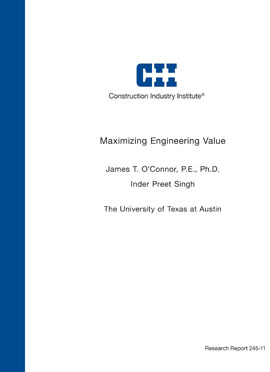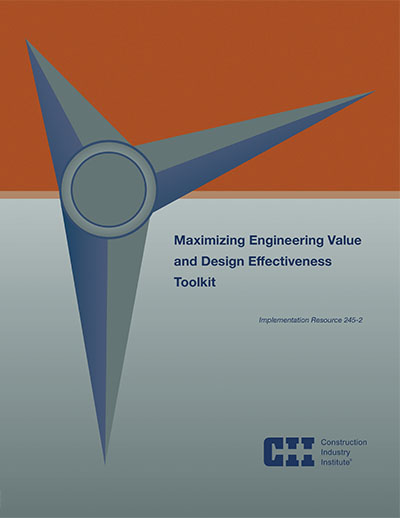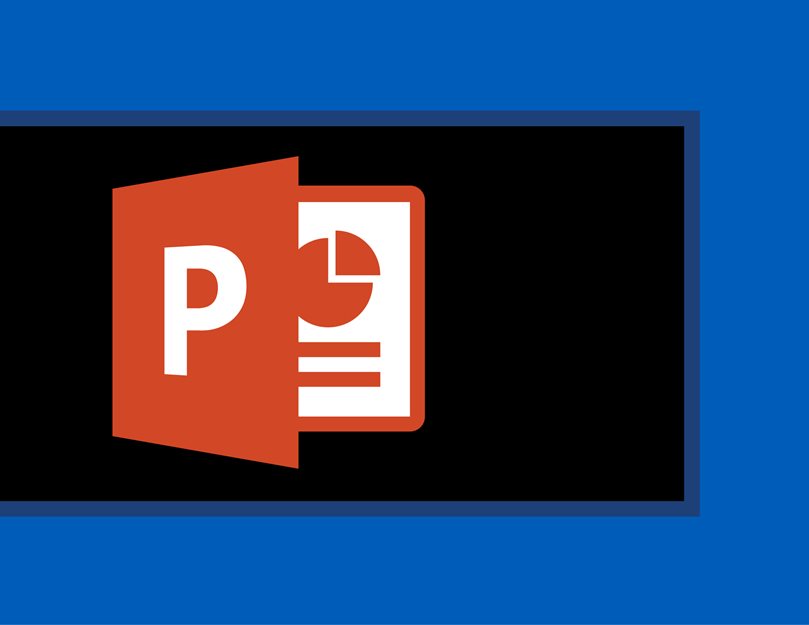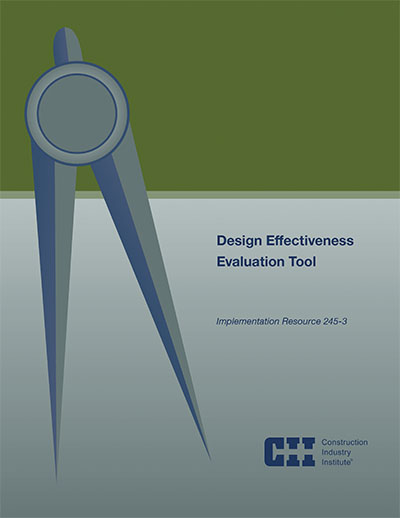
Maximizing Engineering Value
The value that engineering contributes to capital projects is rarely maximized for a wide variety of reasons. The engineering phase can be rushed; the design team can be underresourced; owner’s requirements can be unclear; technology can change rapidly; organizational structures can be constraining; or project objective priorities can be unclear, to name a few. In today’s project environment, maximizing engineering value requires that a wide variety of issues, opportunities, and challenges be identified and confronted early in the project planning process.
Responding to these opportunities and challenges, CII established the Maximizing Engineering Value Research Team to examine a wide variety of strategies through which project value from engineering can be maximized. Applying rigorous search, analysis, and evaluation processes, the research team ultimately identified 64 engineering strategies for maximizing value to capital projects.
To better understand each of the 64 strategies, the research team further examined each strategy from many perspectives:
- Purpose and objective
- Motive for implementation
- Impact on 11 common project value objectives, including tradeoffs
- Influence of timing on the effectiveness of implementation
- Project characteristics and circumstances for which impact is leveraged
- Frequency of implementation
- Ease of implementation
- Fundamental or mandatory vs. optional implementation
- Linkage with other project phases
- Role in overcoming common barriers to maximizing engineering value
- References for further information.
Much of this information has been organized into one of the research team’s publications, Engineering Strategy Catalog, yet additional questions remain. For example, from such a large listing, how can a project team select those strategies most beneficial to a project? Also, how can such strategies be effectively implemented within a project context—and integrated with design effectiveness efforts?
For help in answering these questions beyond this Research Summary, readers are encouraged to examine the Maximizing Engineering Value & Design Effectiveness Toolkit(CII Implementation Resource IR 245-2), also developed by the research team. The Toolkit includes tools resulting from the work of both RT 233 and RT 245. The five tools for maximizing engineering value include the following:
- Tool 1: Implementation Model
- Tool 2: Engineering Strategy Catalog
- Tool 3: Engineering Strategy Tradeoffs
- Tool 4: Engineering Strategy Selection Tool and User Manual
- Tool 6C: Standard Plant Design Case Study
When well planned and executed, engineering value can be significantly enhanced on capital projects. The Toolkit is intended to be a comprehensive and easy-to-use resource that project teams can use to maximize engineering value. This publication summarizes the process applied by the research team, highlights key findings from the research, and introduces and reviews elements of the Toolkit.
Decisions made in the earliest phases of a project have the highest potential to exercise the greatest influence on a project as a whole. As depicted in the Cost-Influence curve below, influence starts to decrease rapidly after the Basic Engineering phase.
Sixty-four engineering strategies were identified and defined by Research Team 245, in collaboration with the strategies previously identified by Research Team 233. Sixteen are considered fundamental and should be implemented on most, if not all, projects. Below are 2 examples of these 16 fundamental engineering strategies. Detail explanations for each strategy is found in the research summary and research report. (RR245-11, p. 24):
- A 4 – Appropriate Allocation of Design-Related Risks & Rewards
- A 14 – Integration of Lessons Learned into Design
The remaining optional engineering strategies have been categorized into 6 different groupings:
- Alternative design delivery strategies
- Assistance to owner services
- Management of design interfaces
- Strategic design decisions
- Design approaches
- Opportunity capture/Design for X
A more detailed list of the optional engineering strategies is included in the research summary.
Engineering Strategy Tradeoff’s –
Although all engineering strategies are important, some can involve tradeoffs or negative impacts to one or more project value objectives (PVO). It is important that the engineering strategies selected be properly aligned with the Owner’s relative prioritization of project objectives. Schedule reduction, capital cost reduction, and design/construction quality are the objectives most frequently supported by the strategies, while capital cost reduction is also the most commonly sacrificed objective (or tradeoff) among the strategies. A complete tabular presentation of objectives supported by each strategy is presented in Appendix B of the Research Report.
Developed to facilitate the selection of optional engineering strategies for implementation based on most value for your project. (RR 245-11, Appendix G – page 92)



